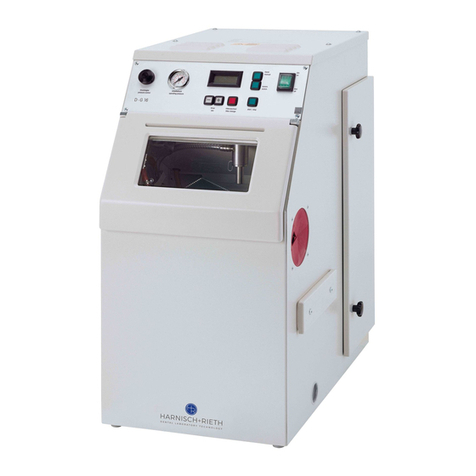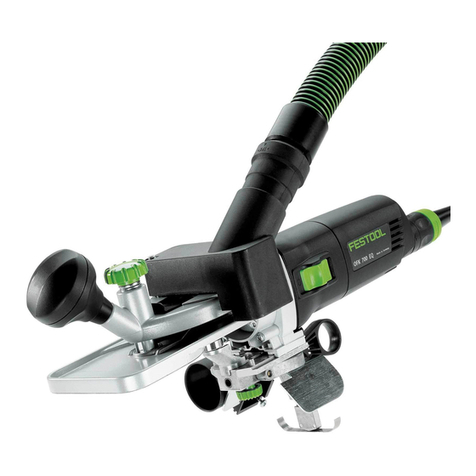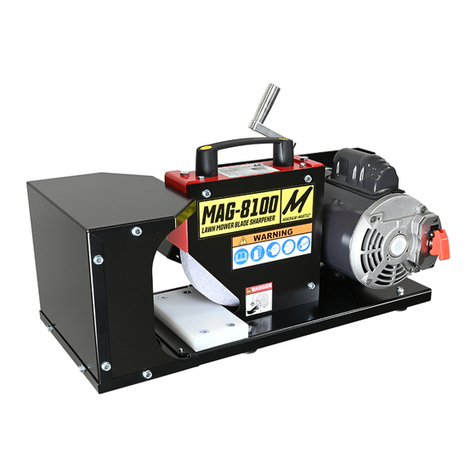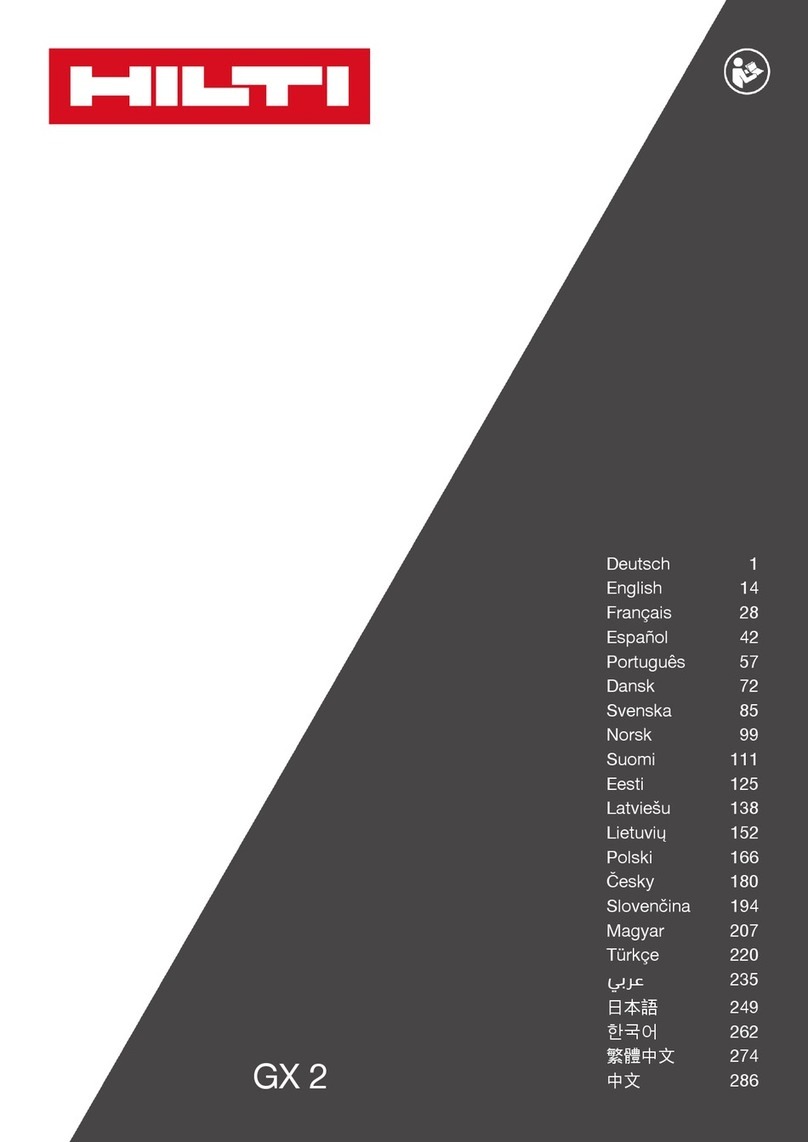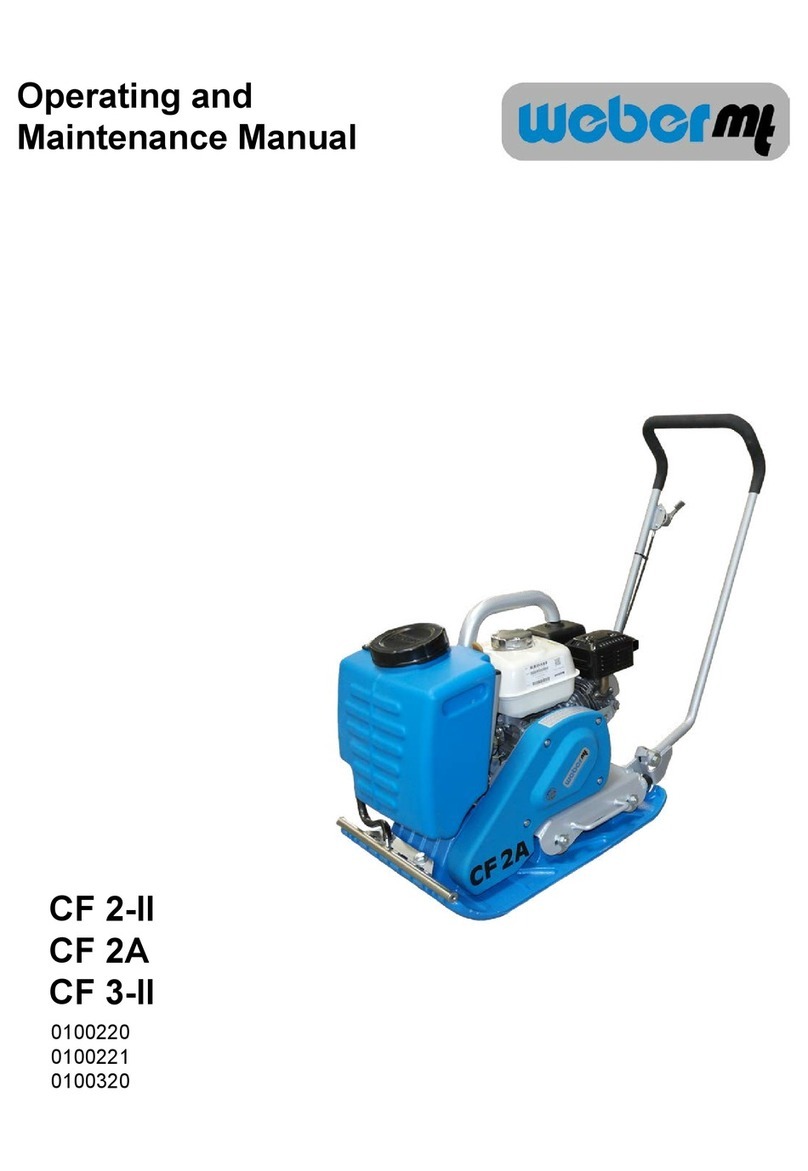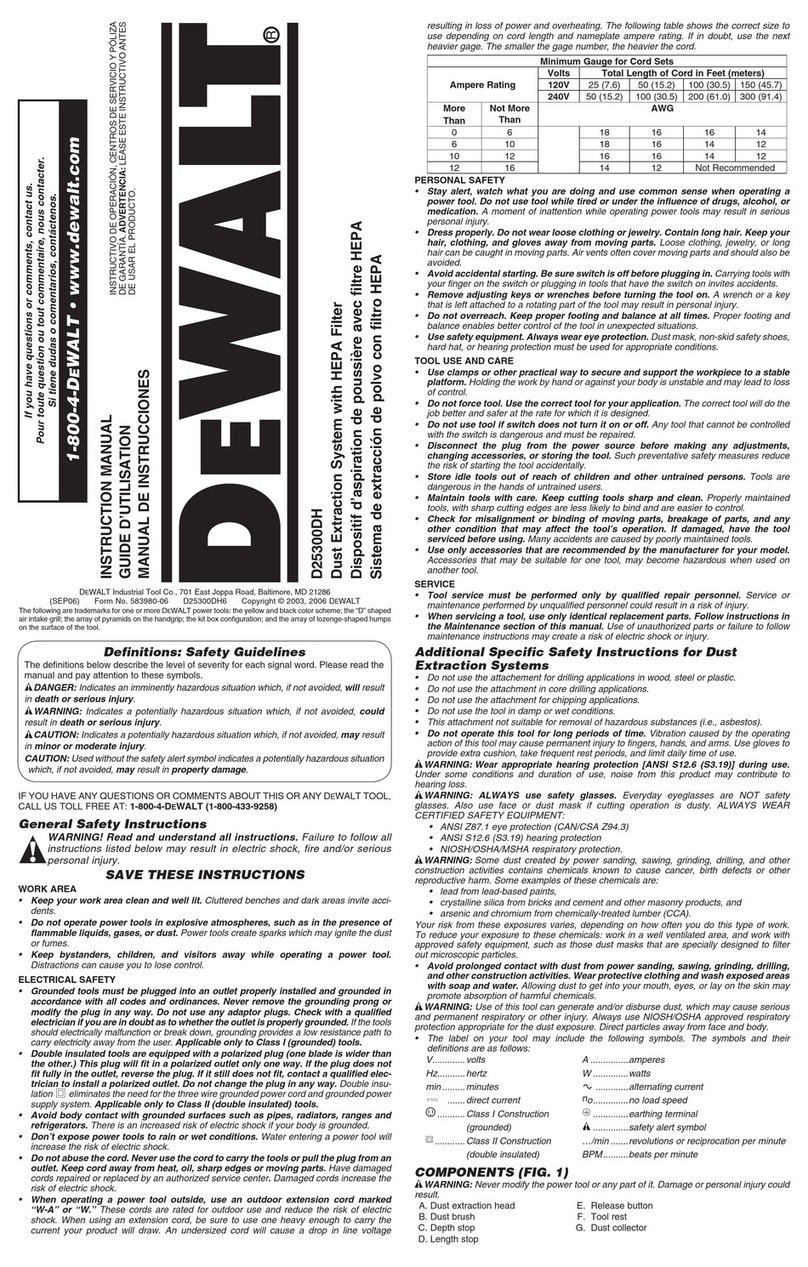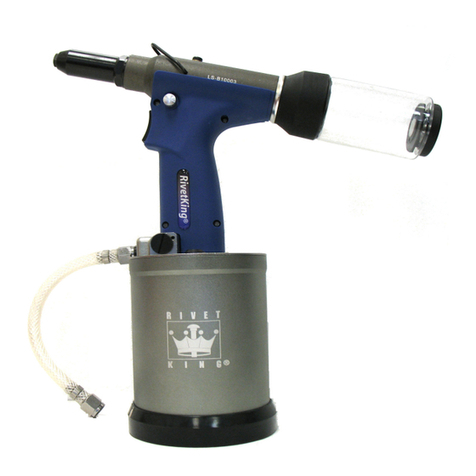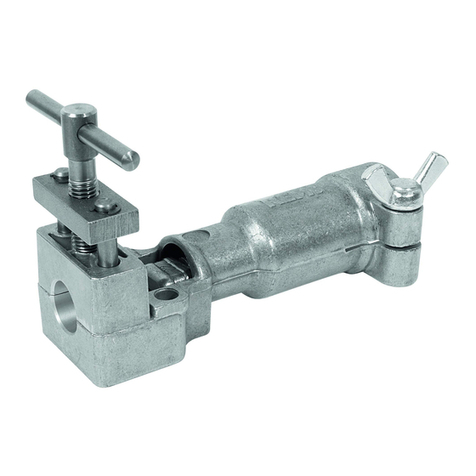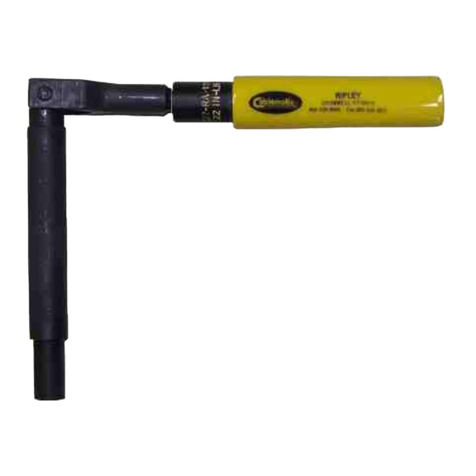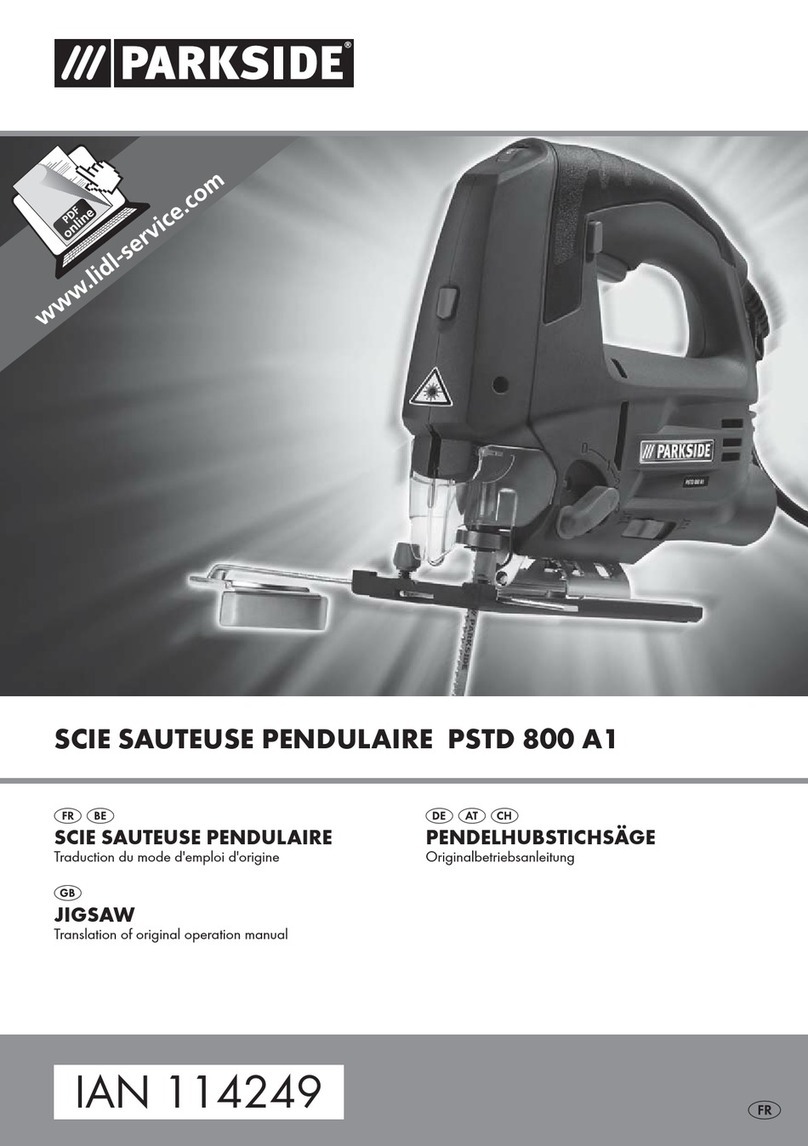Harnisch+Rieth D-H 22 S User manual

Operating instructions
Machine designation: Manual blasting unit
Machine type: D-H 22 S
Machine no.: .....................................
Keep for future reference!

D-H 22 S - 16.02.2002 / Vers.: 1 1
Dear customer,
Thank you for the confidence you have placed in us by purchasing this manual
blasting unit.
For this unit to be of service to you for many years to come, please take the
time to read these operating instructions carefully, especially before using the
unit for the first time.
Contents
1 Safety .............................................................................................................. 2
1.1 Intended use .......................................................................................... 2
1.2 Possible dangers ................................................................................... 2
1.3 Approved operators ............................................................................... 2
1.4 Safety measures at site of operation ..................................................... 3
1.5 Marking of safety references contained in these instructions................ 3
2 Initial/setting into operation ......................................................................... 4
2.1 Technical data........................................................................................ 4
2.2 Unpacking the manual blasting unit....................................................... 4
2.3 Identification and description of the unit components............................ 5
2.4 Initial/setting into operation procedure................................................... 8
3 Operation........................................................................................................ 9
3.1 Connecting the blasting unit to the compressed air supply ................... 9
3.2 Blasting agents ...................................................................................... 9
3.3 Checking the filter unit ......................................................................... 10
3.4 Automatic deactivation device and filter control lamp.......................... 10
4 Cleaning/maintenance ................................................................................ 11
4.1 Exchanging the filter bag ..................................................................... 11
4.2 Cleaning/exchanging the ultra-fine filter .............................................. 11
4.3 Cleaning the insert sieve (residual embedding materials)................... 12
4.4 Letting out blasting agent..................................................................... 12
4.5 Checking the injector as blasting performance decreases.................. 13
5 Blasting chamber illumination (24 V) ........................................................ 15
6 Electrical fuse protection............................................................................ 15
7 Accessing the electrical/pneumatic control system................................ 15
8 Warranty conditions .................................................................................... 16
9 EC declaration of conformity ..................................................................... 17

2D-H 22 S - 16.02.2002 / Vers.: 1
1 Safety
1.1 Intended use
The D-H 22 S manual blasting unit is intended for use in dental laboratories:
−for removing the residuals of embedding materials and oxides on cast
components after their being unbedded,
−for leveling and smoothing of cast component surfaces and
−for polishing
Unauthorized modifications and additions are not permitted for safety reasons!
The conditions for operating, maintaining and cleaning the unit, as described in
these operating instructions, must be strictly adhered to.
1.2 Possible dangers
The D-H 22 S manual blasting unit is safe when used as intended. However,
when not used properly or with care its use can lead to injuries of eyes or skin
due to the sand blast leaving the injector.
If the front flap is open you should not activate the (removable) injector.
Potential ignition sources should not be suctioned.
Before maintenance work and cleaning, the unit should be switched off and
disconnected from the mains supply (i. e. the mains plug should be pulled).
Before accessing any of the incorporated electric components, the unit should
be disconnected from the mains supply!
1.3 Approved operators
The operator of the machine should make sure that the operating instructions
are accessible to the operating personnel. The operator should make sure that
they have been read and fully understood by the operating personnel. Only
then should they be allowed to operate the machine.

D-H 22 S - 16.02.2002 / Vers.: 1 3
1.4 Safety measures at site of operation
The installation surface should be flat and stable according to the weight of the
manual blasting unit.
Make sure by endorsing appropriated corporate instructions and control
mechanisms that the pin drilling workplace always complies with the pertinent
accident prevention regulations.
Foreign bodies should not be inserted through the ventilation openings of the
unit.
1.5 Marking of safety references contained in these instructions
Note Refers to tips and other particularly helpful pieces of information.
Caution Refers to particular ways of operation or handling, the non-adherence of which
can lead to malfunctioning, damages or other kinds of trouble.
Danger Refers to dangerous situations, in which injuries can occur.

4D-H 22 S - 16.02.2002 / Vers.: 1
2 Initial/setting into operation
2.1 Technical data
Machine designation :Manual blasting unit
Machine type :D-H 22 S
Overall dimensions :Width 450 mm (with plug for foot switch),
Depth 485 mm (with control knob for working
pressure),
Height 600 mm.
Electrical connection :230 volts/50 Hz
Overvoltage category :II
Compressed air connection :max. 10 bar
Power consumption :approx. 50 watts
Electrical fuse protection :2x 2.5 A/T
Blasting chamber
illumination
:2 tubular lamps 18 W/24 V
Compressed air capacity :max. approx. 200 l/min.
Weight :approx. 35 kg.
2.2 Unpacking the manual blasting unit
(See fig. 2, page 6)
1. Take off top box lid.
Note Place the box onto two scantlings or onto a palette so you can remove the two
M8 packaging screws on the bottom side of the box more easily.
2. Remove the two M8 packaging screws.
3. The unit must be lifted out of the box by two people (approx. 35 kg).
4. Check the accessories
−Documentation
−Mains connection cable..........................................................no. 022 SM 500
−Foot switch with cable and plug .............................................no. 022 SM 514
−2 m PVC fabric hose, blue Ø 8.2 x 6 with
insert sleeve for quick-action coupling and
swivel nut...............................................................................no. 022 SM 579

D-H 22 S - 16.02.2002 / Vers.: 1 5
2.3 Identification and description of the unit components
(See figures 1 and 3 on pages 5 and 7)
The D-H 22 S manual blasting unit can be operated with all standard laboratory
polish blasting media and special fused alumina.
The pressure regulator (6) adapts the blasting force to the situation at hand.
The unit is equipped with an automatic blasting agent circulation and a motor-
driven blower suction unit. The ultra-fine filter insert (7) guarantees dust-free
working conditions, in which the resulting dust is collected in disposable filter
bags (14).
Fig. 1: Identification of the unit components
2 Front flap
4 Door to filter
compartment
5 Manometer for
Working pressure
6 Pressure regulator for
working pressure
8 Insert sieve
9 Change filter display
10 Knurled nut for insert
sieve
11 Star grips
12 Main switch
13 Sand outlet lid
30 Hand opening

6D-H 22 S - 16.02.2002 / Vers.: 1
Fig. 2: Identification of the unit components
1 Socket for foot switch 19 Injector holder
8 Insert sieve 31 Suction basket
12 Main switch 33 Front floor compartment
15 Mains connection socket
(230 V/50 Hz)
34 10 screws for front floor compartment
16 Compressed air connection 50 Fuse for transformer (blasting chamber
illumination)
18 Blasting chamber illumination
(24 V)

D-H 22 S - 16.02.2002 / Vers.: 1 7
Fig. 3: Identification of the unit components
2 Front flap 40 Nozzle Ø 63 mm
7 Ultra-fine filter 41 Plastic filter bag connection
9 Change filter display 42 Filter bag cap
10 Knurled nut for insert sieve 43 2 M6 nuts
14 Filter bag 45 Air outlet
17 Strip with long holes 46 Suction motor
18 Blasting chamber illumination
(24 V)
47 Suction compartment
19 Injector holder 48 Wire basket
31 Suction basket 49 Sealing surfaces
33 Front floor compartment 50 Fuse for transformer (blasting chamber
illumination)
34 10 screws for floor
compartment
51 Filter compartment

8D-H 22 S - 16.02.2002 / Vers.: 1
2.4 Initial/setting into operation procedure
(See figures 1 and 2, on pages 5 and 6)
1. Connect unit to compressed air supply (see section “3.1“).
2. Fill with blasting agent (see section “3.2“).
3. Connect foot switch to socket (1) (located during transport in blasting chamber)
4. Establish connection to mains supply (230 V/50 Hz) using the mains supply
connection cable delivered with the unit (socket(15)).
5. Check the filter unit (see section “3.3“).
6. Actuate main switch (12).
Note Switching the unit on at the main switch renders it electrically ready for
operation.
7. Suction is activated. Internal illumination lights up.
8. Adjust working pressure (blasting pressure) at pressure regulator (6) to desired
value.
The working pressure is controlled by manometer (5).
Note The working pressure should not be set to more than 5 bar.
9. The sanding jet (exits the injector) is released by actuating the foot switch.

D-H 22 S - 16.02.2002 / Vers.: 1 9
3 Operation
3.1 Connecting the blasting unit to the compressed air supply
(See fig.2 page 6)
1. Connect the fabric hose delivered with the unit to the compressed air
connection (16).
2. Connect insert sleeve for rapid-action coupling to compressed air supply (max.
10 bar).
Caution The compressed air used must be free of humidity and oil.
In order to maintain trouble-free working conditions, you should connect a
water separator directly in series or at a max. distance of 1m to the unit.
3.2 Blasting agents
(See fig.1 page 5)
At works the unit is design for the following blasting agents:
Type of blasting agent Blasting agent class
Polish blasting medium (Al-oxide) cl. 60 B (120 µm)
EW 60 (250 µm)
EW 80 (180 µm)
Special fused alumina cl. 150 A (150 µm)
Caution The unit is designed for the use of HARNISCH+RIETH blasting agents. We do
not grant guarantee for malfunctioning or damages which result from the use of
other kinds of blasting agents.
1. Open front flap (2).
Note Loosen knurled nut for insert sieve (10). Pull out insert sieve (8) by ¾ so that
you can check the level of the blasting agents more easily.
2. Fill with blasting agent until it is approx. 4 cm below the insert sieve (8).
Caution To avoid malfunctioning make sure that there are no dirt particles contained in
the blasting agent.
3. Insert sieve (8) and slightly tighten by hand with knurled nut (10).

10 D-H 22 S - 16.02.2002 / Vers.: 1
3.3 Checking the filter unit
(See figures 1 and 3, on pages 5 and 7)
Caution The D-H 22 S manual blasting unit should only be operated with the ultra-fine
filter (7) and filter bag (14) properly inserted and free of damages.
1. Open the door to the filter compartment (4) by screwing off the two star grips
(11).
2. Make sure that the ultra-fine filter (7) is not damaged and that it is properly (i. e.
tightly) pressed by strip (17) against the sealing surfaces (49).
3. The two M6 nuts (43) should be tightened securely and evenly.
4. Make sure that the filter bag (14) was not damaged while being inserted into
the wire basket (48).
5. The plastic connection (41) of the filter bag should be fastened securely to the
connection nozzle (40).
6. Close the door tightly to the filter compartment (4) by tightening the star grips
fairly securely.
3.4 Automatic deactivation device and filter control lamp
(See fig. 3 page 7)
Note The max. admissible filter bag (14) quantity being reached actuates the
deactivation device via a vacuum switch and the control lamp “Change filter“
(9) lights up. The suction device is switched off.
−Filter bag (14) must then be replaced. See section “4.1“.
Note If the unit is switched off by the automatic deactivation device then you can still
work with it for a short while without having to change the filter bag by first
switching the unit off and on again and by tapping the filter bag (14).
Note If the filter bag (14) is only slightly filled when the deactivation device is actuated
(Change filter display lights up) then you should check the ultra-fine filter (7)
(see section “4.2“).

D-H 22 S - 16.02.2002 / Vers.: 1 11
4 Cleaning/maintenance
(See figures 1 and 3, on pages 5 and 7)
Note If the unit is switched off by the automatic de-activation device, then you can
continue for a while without having to exchange the filter bag (14) by switching
the unit off and on again and then by knocking the filter bag.
To knock the filter bag (14) open the door to the filter compartment (4) by
screwing off the two star grips (11).
4.1 Exchanging the filter bag
(See figures 1 and 3, on pages 5 and 7)
1. Open the door to the filter compartment (4) by screwing off the two star grips (11).
2. Press the plastic connection (41) off of the nozzle (40) using both hands.
3. Seal filter bag (14) with attached plastic cap (42).
4. Take the filter bag (14) in the wire basket (48) to the waste disposal.
Caution In no case should you empty and re-use the disposable paper filter bag, as this
- irrespective of the possible damages to the operator's health - causes the unit
to malfunction.
Note Do not use compressed air to eliminate residual dust from the filter
compartment (51).
5. Insert new filter bag (14) tightly and check filter unit (see section “3.3“).
Note See section “4.2“ regarding details for changing the ultra-fine filter.
4.2 Cleaning/exchanging the ultra-fine filter
(See figures 1 and 3, on pages 5 and 7)
Note After changing the filter bags (14) approx. ten times you should also take out
the ultra-fine filter (7) and clean it (dry) or change it for a new one!
We can also clean the ultra-fine filter (7) for you in exchange for a new one.
We only use type checked filters according to ZH 1/487, para. 2 (with test
certificate according to DIN 24 184).
1. Open the door to the filter compartment (4) by screwing out the two star grips
(11).
2. Press the plastic connection (41) from the nozzle (40) using both hands.

12 D-H 22 S - 16.02.2002 / Vers.: 1
3. Pull out the filter bag with the wire basket (48).
4. Loosen the two nuts (43) and lift out the strip (17) (with the long holes).
5. Take out the ultra-fine filter (7).
Caution The sealing surfaces (49) and the suction compartment (47) should be kept
free of dust, as it can possibly cause damages to the suction motor (46).
Filter compartment (51), suction compartment (47) as well as sealing surfaces
(49) should be vacuum-cleaned.
6. Insert new/cleaned ultra-fine filter (7).
7. Place strip (17) from above onto the threaded pins.
8. Tighten the two M6 nuts (43) securely and evenly.
9. Slide filter bag (14) inside the wire basket (48) into the unit and press the
plastic connection (41) back onto the nozzle (40) using both hands.
10. Check filter unit (see section “3.3“).
4.3 Cleaning the insert sieve (residual embedding materials)
(See fig. 1, page 5)
1. Screw out knurled nut for insert sieve (10).
2. Pull out and clean insert sieve (8).
3. After re-assembling insert sleeve tighten knurled nut securely by hand.
4.4 Letting out blasting agent
(See fig. 1, page 5 )
1. Position the unit with sand letting out opening onto the edge of the table.
2. Let out blasting agent by taking off the sand outlet lid (13).
Note While doing so, it is also advisable to take out and clean the insert sieve (8)
(see section “4.3“).

D-H 22 S - 16.02.2002 / Vers.: 1 13
4.5 Checking the injector as blasting performance decreases
(See figures 2 and 4, on pages 6 and 14)
As the blasting performance of the unit decreases you should check the
injector (20) and/or the blasting nozzle (22) as well as the suction basket (31)
as follows:
1. Switch off the unit at the main switch (12) and pull the mains plug!
2. Unhinge the injector holder (19) and take it out of the blasting chamber.
3. Detach spring plug (21) laterally.
4. Pull out blasting nozzle (22) by turning it and by applying counter force to the
injector casing (20).
5. Check whether foreign matter is located in the nozzle bore and, if necessary,
remove it.
6. Worn-out jets (22) (diameter larger than 4,5 mm) should be removed (see fig. 4
page 14).
7. injector needle (23) should be level with the edge of the injector casing (24). If
due to wear and tear the injector needle has shortened by more than 1,5 mm
then you should replace the injector.
−Remove screw (25), seal air hose (27) and take out the injector together
with the blasting agent suction hose (26).
8. Check the suction basket (31) in the lower part of the sand basin for dirt
particles and, if necessary clean it (for further details see “Letting out blasting
agent“, section “4.4“).

14 D-H 22 S - 16.02.2002 / Vers.: 1
Fig. 4: Disassembling the injector
19 Injector holder 24 Injector edge
20 Injector casing 25 Screw (10 mm)
21 Spring plug 26 Blasting agent suction hose
22 Blasting nozzle 27 Air hose
23 Injector needle

D-H 22 S - 16.02.2002 / Vers.: 1 15
5 Blasting chamber illumination (24 V)
(See fig. 3, page 7)
The blasting chamber illumination (18) is operated with a safety low voltage of
24 volts.
Note When exchanging the tubular lamp press both contacts (holder) slightly apart.
Before inserting a new tubular lamp press both contacts (holder) slightly
together to fasten the lamp securely.
6 Electrical fuse protection
(See fig. 2 page 6)
−The fuse for feeble currents 2,5 A/T (50) for the transformer is located on the
bottom side of the unit (blasting chamber illumination, automatic deactivation
device).
−The two main fuses (0.315 A/T) are built into the mains connection socket (15).
7 Accessing the electrical/pneumatic control system
(See fig. 2 page 6)
The electrical/pneumatic control system is located on the bottom side of the
unit in the front floor compartment (33).
Danger Before opening the front floor compartments (33) switch off unit at main switch
(12) and pull the mains supply plug.
−Removing the 10 screws (34) opens the front floor compartment.

8 Warranty conditions
This device conforms to the current safety regulations and was subjected to extensive
testing before leaving the works.
We grant a 12 months guarantee, in which we are obliged to carry out all repairs
resulting from material or fabrication faults free of charge.
The warranty expires if repairs are not carried out by specialized dealers or by us.
Replacements for reasons covered by the guarantee do not lead to an extension of the
original guaranty period.
Normal wear and tear or damages resulting from incorrect operation are not covered by
the terms of warranty.
In order to be able to provide you with a comprehensive service we ask you to fill out the
guarantee return form (attached at the beginning of these instructions) and send it to us
by fax or letter (window envelope).
Fax no.: 07181/73139
------------------------------------------------------------------------------------------------------------Fold here for window envelope---
Copy
Guarantee return form
Maschinenbau
Harnisch+Rieth GmbH & Co.
Postfach 1260
D-73644 Winterbach
Machine
designation: Manual blasting unit
Machine type: D-H 22 S
Machine no.:
Date of purchase:
Dealer/Store:
From:
Date/signature:

D-H 22 S - 16.02.2002 / Vers.: 1 17
9 EC declaration of conformity
as stipulated by the EC directive for machines
89/392/EEC, Appendix II A
We herewith declare that due to its design the machine specified below is in
conformity with the basic safety and health requirements of the EC directives.
In the event of modifications of the machine not approved by us this certificate
looses its validity.
Name of the manufacturer :Harnisch+Rieth
Address of the manufacturer :Küferstraße 14-16, 73650 Winterbach
Machine designation :Manual blasting unit
Machine type :D-H 22 S
The following pertinent EC directives were applied:
EC machine directive (89/392/EEC), corresponding to 9. GSG regulation of 12.05.93
EC low voltage directive (73/23/EEC), corresponding to 1. GSG regulation of 11.06.79
EC EMC directive (89/336/EEC), corresponding to EMC law of 09.11.92
Following harmonizing standards were applied:
DIN EN 292 :Machine safety.
DIN EN 61 010-1 :Safety regulations for electric measuring, controlling and laboratory devices.
DIN EN 55 014 :Interference suppression of electrical apparatus and installations.
DIN EN 55 104 :Electromagnetic compatibility, noise resistance requirements (category I).
The following national technical specifications were applied:
ZH 1/487 :Facility for separating health endangering dusts with re-circulation of the clean air
into the work rooms.
A technical documentation is available.
The operation instructions belonging to the machine are also available.
Director of the Quality Control Department
Winterbach, 06th September, 1995
Table of contents
Other Harnisch+Rieth Power Tools manuals
Popular Power Tools manuals by other brands
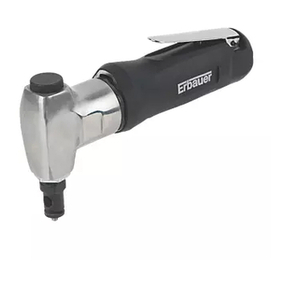
Erbauer
Erbauer ERN647ATL-I manual

HIKOKI
HIKOKI WR 36DA Handling instructions
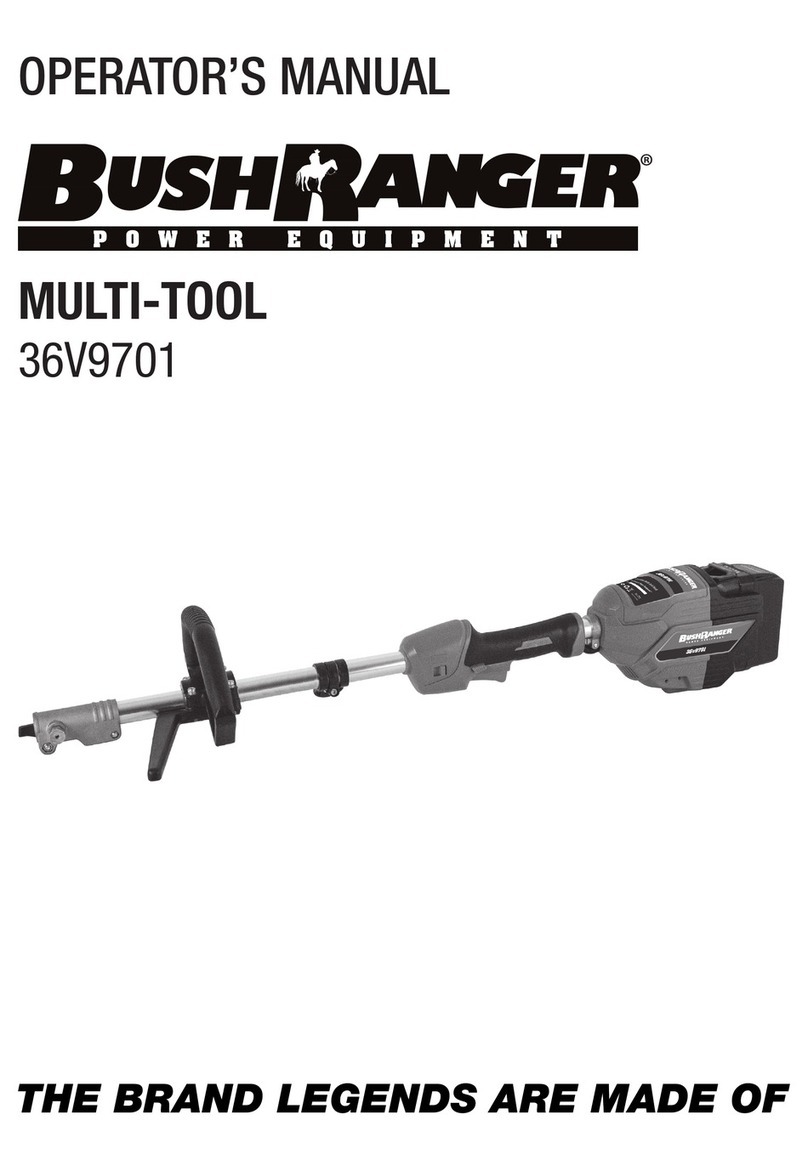
Bushranger
Bushranger MULTI-TOOL 36V9701 Operator's manual
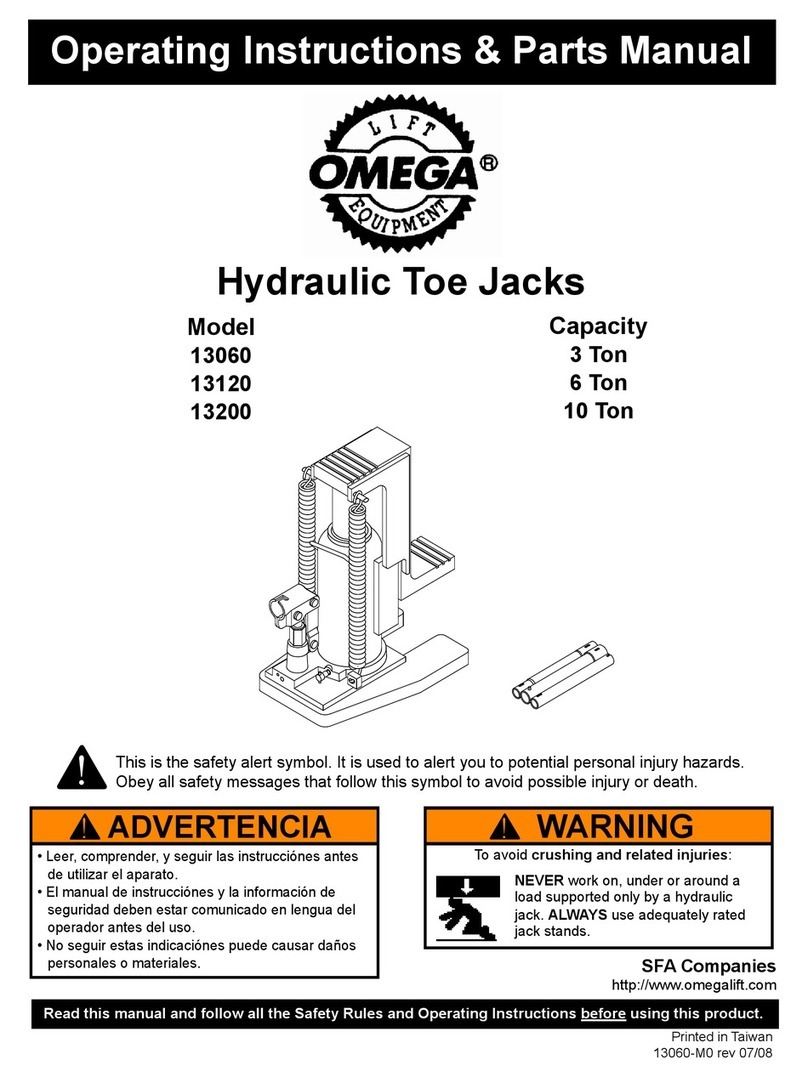
Omega Lift
Omega Lift 13120 Operating instructions & parts manual
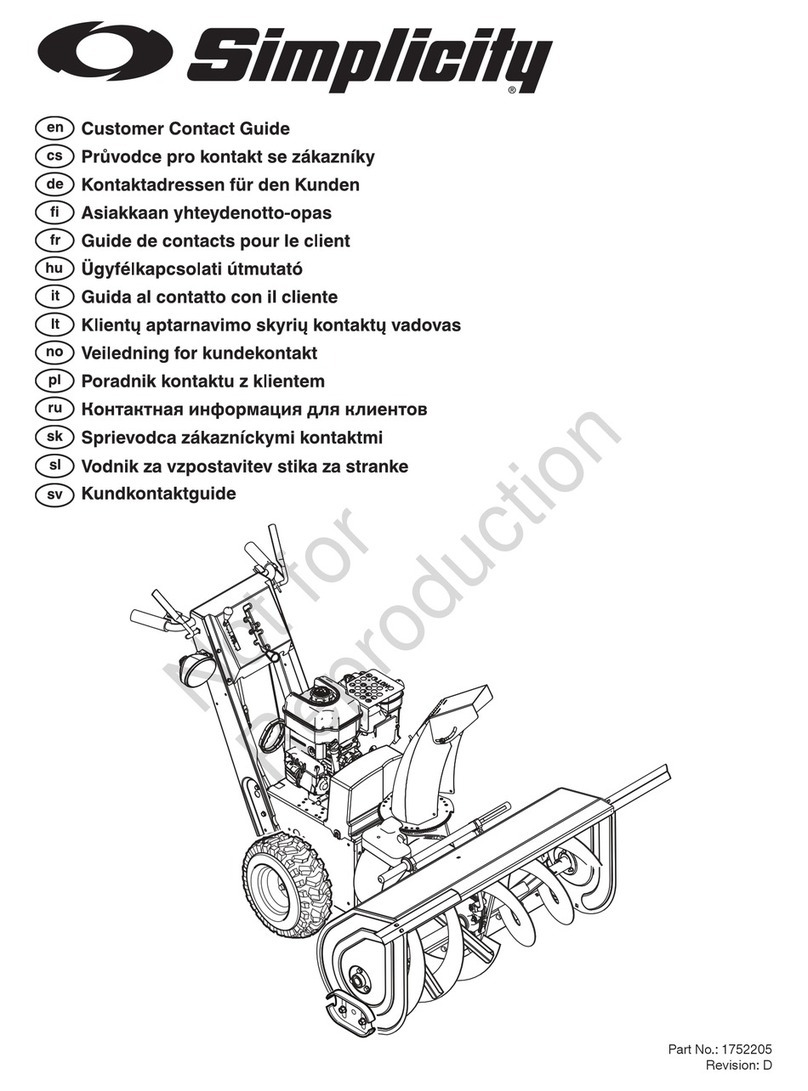
Briggs & Stratton
Briggs & Stratton Simplicity 1752205 Customer Contact Guide
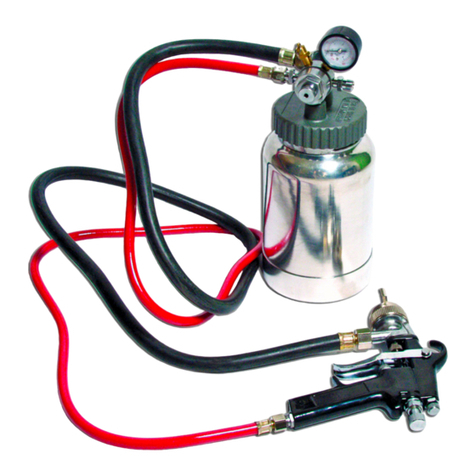
Raider
Raider RD-PT01 Original instruction manual
